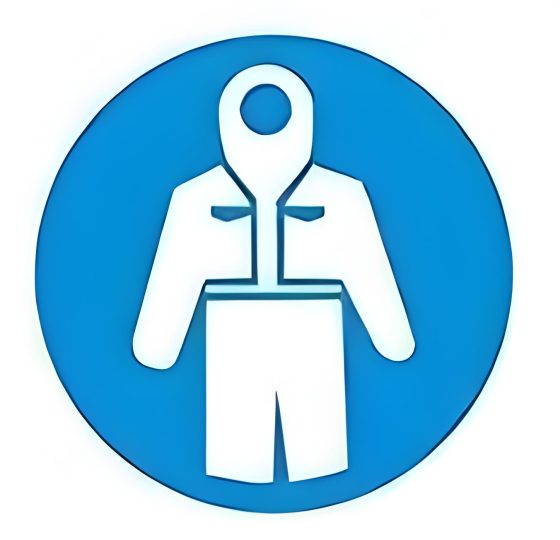Norma EN per le calzature di sicurezza & calzature da lavoro
1. Safety footwear
What is EN ISO 20345?
The full name of the EN ISO 20345 specification is In iso 20345:2022 Personal Protective Equipment – Safety Footwear which is the standard all styles of “safety footwear” are tested against. It was formerly referred to as EN345, but this was replaced by EN ISO 20345:2004. In iso 20345:2007, In iso 20345:2011 was the next revision, followed by EN ISO 20345:2022, which is the current version of this standard.
The standard EN ISO 20345 defines both the basic and additional requirements for safety shoes for commercial use. Footwear in accordance with EN ISO 20345 is intended to protect the wearer from bumps, crushing, falling or rolling objects, from walking into sharp or pointed objects, heat or cold, and hot substances.
The basic requirements described in EN ISO 20345 include:
* height of the upper
* heel area on boots
* minimum length, pressure and bump impact resistance of the toe cap
* water vapour permeability and water vapour number of the upper
* outsole thickness and abrasion resistance of the outsole.
In iso 20345:2022+A1:2024
All safety footwear has Toe Protection providing 200 joules of impact protection (falling objects) E 15,000 newtons of compression protection (crushing).
SB – Any product that is classified as SB only has a protective toecap.
Slip Resistance
All safety footwear certified to EN ISO 20345:2022 is tested to a mandatory basic level of slip resistance. The test uses ceramic tiles with Sodium Lauryl Sulphate (soap) and tests forepart and heel slip.
An additional claim for outsoles that perform to a higher level of slip resistance can be made and an SR symbol can be used. The additional SR level test uses ceramic tiles with Glycerol and tests forepart and heel slip.
|
Class |
Protective toecap (200 Joules) |
Mandatroy slip resistance |
Full enclosed heel |
UN |
E |
Puncture protection |
WPA |
Cleated outsole |
WR |
|||
|
Electrical resistance |
Energy absorption under the heel |
P Metal insert |
PL |
PS Non-metal insert 3.0mm test nail |
Water penetration and absorption of upper |
Whole shoe water-resistant |
||||||
|
SB |
✔ |
✔ |
||||||||||
|
S1 |
✔ |
✔ |
✔ |
✔ |
✔ |
|||||||
|
S1P |
✔ |
✔ |
✔ |
✔ |
✔ |
✔ |
||||||
|
NEW |
S1PL |
✔ |
✔ |
✔ |
✔ |
✔ |
✔ |
|||||
|
S1PS |
✔ |
✔ |
✔ |
✔ |
✔ |
✔ |
||||||
|
|
S2 |
✔ |
✔ |
✔ |
✔ |
✔ |
✔ |
|||||
|
S3 |
✔ |
✔ |
✔ |
✔ |
✔ |
✔ |
✔ |
✔ |
||||
|
NEW |
S3L |
✔ |
✔ |
✔ |
✔ |
✔ |
✔ |
✔ |
✔ |
|||
|
S3S |
✔ |
✔ |
✔ |
✔ |
✔ |
✔ |
✔ |
✔ |
||||
|
|
S4 |
✔ |
✔ |
✔ |
✔ |
✔ |
||||||
|
S5 |
✔ |
✔ |
✔ |
✔ |
✔ |
✔ |
✔ |
|||||
|
NEW |
S5L |
✔ |
✔ |
✔ |
✔ |
✔ |
✔ |
✔ |
||||
|
S5S |
✔ |
✔ |
✔ |
✔ |
✔ |
✔ |
✔ |
|||||
|
S6 |
✔ |
✔ |
✔ |
✔ |
✔ |
✔ |
✔ |
|||||
|
S7 |
✔ |
✔ |
✔ |
✔ |
✔ |
✔ |
✔ |
✔ |
✔ |
|||
|
S7L |
✔ |
✔ |
✔ |
✔ |
✔ |
✔ |
✔ |
✔ |
✔ |
|||
|
S7S |
✔ |
✔ |
✔ |
✔ |
✔ |
✔ |
✔ |
✔ |
✔ |
|||
Note: S1, S2, S3, S6 and S7 shoes are made from leather and other materials (class 1). S4 and S5 shoes are all-rubber or all-polymeric (class 2). SB shoes – which allow for an open heel – can be either class 1 or class 2
In iso 20345:2022+A1:2024 Additional Classifications
|
Symbol |
|
|
UN |
Antistatic between 0.1 and 1000MΩ. |
|
AN |
Protection from impact in the ankle area. |
|
C |
Partially conductive Electrical Resistance ≤100Ω |
|
CI |
Insulation of outsole against cold: 30mins at -17˚C with loss of heat at ≤10˚C. |
|
E |
Energy Absorption of the seat region. Energy to be absorbed to be ≥20j. |
|
FO |
Fuel oil resistance – this now optional. Resistance of the outsole to hydrocarbon-based oils, petrol etc. |
|
HI – |
Insulation of outsole against heat: 30mins at 150˚C with increase in temperature no higher than 22˚C. |
|
HRO |
Resistance of the outsole to brief direct contact with heat up to 300˚C. |
|
LG |
A ladder grip on the outsole that meets specific dimensional requirements. |
|
M |
Protection in the metatarsal area against up to 100 joules impact energy. |
|
SC |
A scuff cap with abrasion resistance in the toe area to protect from scrapes and bumps. |
|
WR |
No water detected inside the footwear after a minimum of 80mins. |
|
WPA |
The breathability of the upper materials. |
- Occupational footwear
What is EN ISO 20347?
In iso 20347:2022 is a European standard that specifies the performance requirements for occupational footwear used in various work environments. This standard ensures that work shoes, stivali, and other types of footwear provide adequate protection, comfort, and durability for employees exposed to workplace hazards, such as slips, impacts, or extreme temperatures. The 2022 revision of the standard introduces updates to improve the protection and comfort of footwear, while continuing to meet the needs of industries like construction, healthcare, manufacturing, and logistics.
Under the standard, EN ISO 20347-certified footwear is expected to have:
* An antistatic, fully enclosed and energy-absorbing heel
* Water absorption and penetration resistance
* A cleated sole
* An outsole resistance to fuel oil
In iso 20347:2022+A1:2024
Unlike safety footwear and protective footwear, occupational footwear is not legally required to have safety features such as a protective toe cap or materials designed to prevent sharp objects from penetrating the footwear. For this reason, they are not designed to protect the feet from heavy compression or impact force.
|
Class |
Norm year |
Anti-Slip |
Toe cap |
Puncture-resistant sole |
Closed heel |
Fuel Resistance |
Anti-static properties |
Energy absorption capability in the heel area |
No water penetration for a minimum of 60 minuti. |
Impermeabile |
Profiled sole |
|
OB |
✔ |
× |
× |
open heel possible |
× |
× |
× |
× |
× |
× |
|
|
O1 |
✔ |
× |
× |
✔ |
× |
✔ |
✔ |
× |
× |
× |
|
|
O2 |
✔ |
× |
× |
✔ |
× |
✔ |
✔ |
✔ |
Can be fulfilled |
× |
|
|
O6 |
NEW |
✔ |
× |
× |
✔ |
× |
✔ |
✔ |
✔ |
✔ |
× |
|
O4 |
✔ |
× |
× |
Rubber or plastic boots |
× |
✔ |
✔ |
✔ |
✔ |
× |
 Shanghai Zimai Protection Technology Co., Ltd.
Shanghai Zimai Protection Technology Co., Ltd.







